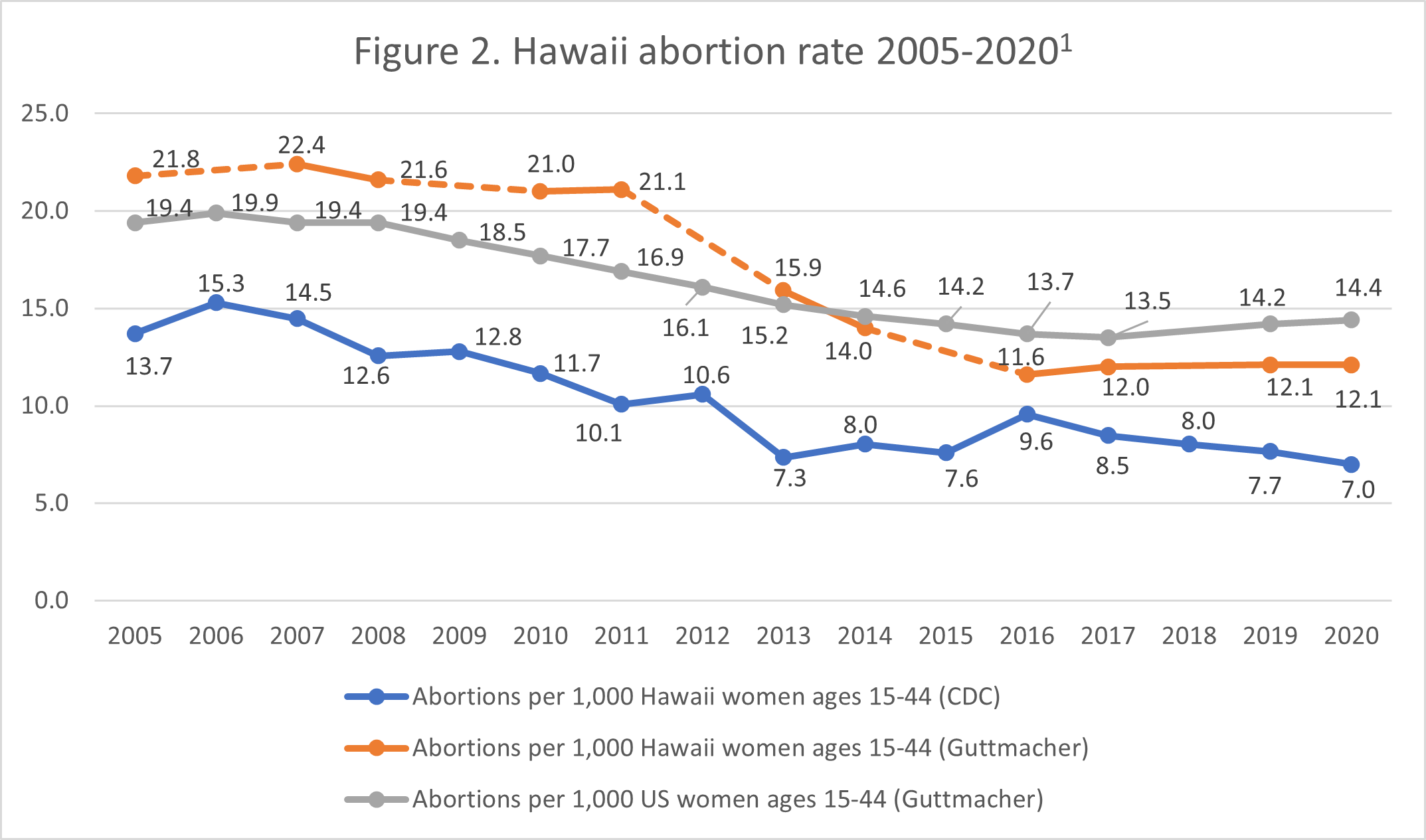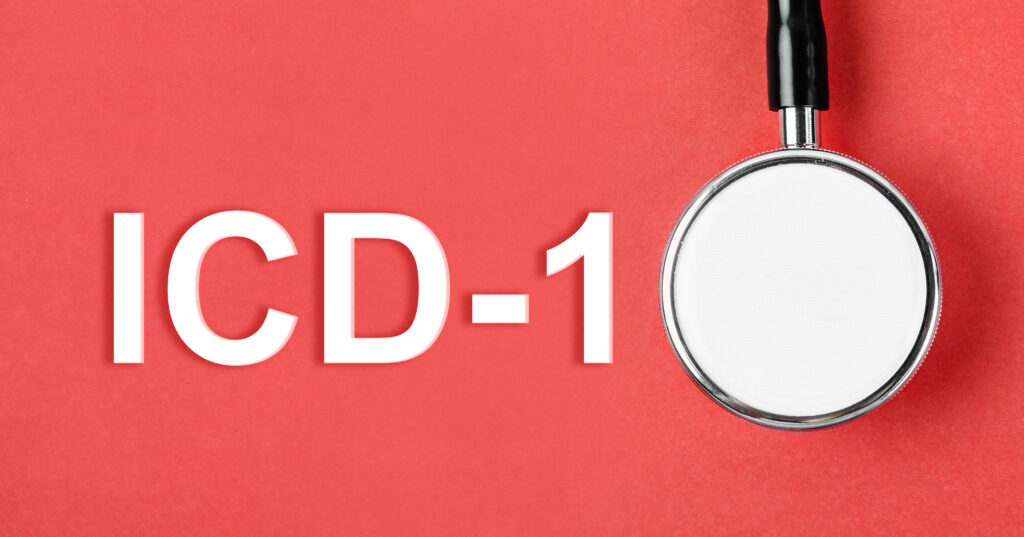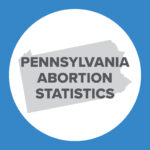Abortion Reporting: Hawaii (2020)
Hawaii abortion reporting is delayed, but 2020 abortion statistics are available in the latest national report from the U.S. Centers for Disease Control and Prevention.
Statistics and Changes in Hawaii Abortions, 2019-2020

The report does not include information on Hawaii’s Planned Parenthood abortion market share.
Abortion Totals and Trends
The most recent year for which Hawaii has published its full vital statistics report with the state’s abortion data is 2009. Since then, Hawaii has made annual totals available but has not published any state reports with detailed demographic information. However, Hawaii has shared this data with the U.S. Centers for Disease Control and Prevention (CDC), and Hawaii’s abortion statistics that were published in the most recent CDC report, Abortion Surveillance – United States, 2020, have been used in this summary.
State Report Summary
According to the CDC report, there were 1,809 abortions reported in Hawaii in 2020, a decrease of 9.7 percent from 2019 when there were 2,003 abortions reported in Hawaii. The CDC reported that Hawaii’s 2020 abortion rate was 7.0 abortions per 1,000 women ages 15-44, a decrease of nine percent from 2019 when Charlotte Lozier Institute (CLI) estimates that Hawaii’s abortion rate was 7.7. However, Guttmacher estimates essentially no change in Hawaii’s abortion rate of 12.1 between 2019 and 2020 (Fig. 2). The CDC totals (1,809 abortions) are far below (42 percent lower than) the annual totals estimated by the Guttmacher Institute (3,130 abortions) (Fig. 1).
The following numbers represent the totals reported by Hawaii and not the Guttmacher estimate. Ninety-eight percent of the abortions reported in Hawaii were performed on resident women. Nine percent of the abortions were on girls ages 19 and younger. Twenty-eight percent each were performed on women ages 20 to 24 and 25 to 29. Thirty-one percent of the abortions occurred to women in their thirties. CDC suppresses small numbers to protect confidentiality, and the number of abortions on girls ages 14 and under and women ages 40 and over were suppressed. Consequently, the total number of abortions by age does not add up to the total number of abortions reported by the state in 2020. The difference between the total (1,809) and the number of abortions reported by age (1,709) is 100 abortions.
Over half, 54 percent, were performed on women with no previous live births. Sixteen percent were on women with one prior live birth, and 26 percent were on women with two or more prior live births. Sixty-two percent of the abortions were on women who had never had an abortion before. Twenty-one percent were on women with one prior abortion, and 13 percent were on women with more than one. Previous live births and abortions, if any, were not reported for 72 abortions each.
Forty percent of the abortions reported in Hawaii occurred at six weeks of gestation or earlier. Forty percent were performed between seven and nine weeks, and 12 percent were performed between 10 and 13 weeks of gestation. Three percent occurred from 14 to 15 weeks, and two percent each were reported between 16 and 17 weeks and 18 and 20 weeks of gestation. Two percent (30 abortions) were performed at 21 weeks of gestation or later.
Just over half of Hawaii abortions (51 percent) were surgical procedures, while 49 percent were chemical abortions. Chemical abortions increased by 14 percent from 776 chemical abortions in 2019 to 884 in 2020. Now that the Food and Drug Administration has formally approved abortion by mail, the number of chemical abortions occurring in Hawaii will likely continue to increase, since Hawaii abortion providers were some of the first to push for mail-order abortion, including by means of a clinical trial that circumvented FDA safety standards.
Information on the race and marital status of women obtaining abortions in Hawaii was not included in the 2020 abortion surveillance report, either because Hawaii did not report this data or because the data did not meet CDC standards.
Abortion in Hawaii
According to the Guttmacher Institute, in 2020 Hawaii had four abortion centers. Two of the centers are operated by Planned Parenthood. In 2019, both advertised chemical abortions up to 10 weeks zero days of gestation and surgical abortions through 13 weeks, six days. Starting in 2020, both Planned Parenthood centers began advertising chemical abortion up to 11 weeks, zero days, and surgical abortion through the end of 17 weeks. As of December 2022, Planned Parenthood’s Honolulu center advertised surgical abortion through 19 weeks and six days of pregnancy. Abortion by mail is legal in Hawaii, and at least five abortion websites (including Planned Parenthood) accept such orders.
Hawaii has very few restrictions on abortion and permits abortion until viability. After viability, abortion is allowed in cases of risk to the mother’s life or health, but “health” is not defined. Exceptions to abortion regulations for the mother’s health can be very broad; Doe v. Bolton, the companion Supreme Court case to Roe v. Wade, held that health should be considered “in the light of all factors—physical, emotional, psychological, familial, and the woman’s age—relevant to the wellbeing of the patient.”
Legislative Changes
Similar to executive orders issued by several other abortion-friendly states, the former governor of Hawaii, David Ige (D), signed an executive order following the United States Supreme Court’s Dobbs decision. The executive order, titled Protecting Access to Reproductive Health Care Services, prohibits state officials from cooperating with other states attempting to charge women who received an abortion in Hawaii or abortion providers who performed abortions. It is important to note that no state with lifesaving laws allows for women who received an abortion to be charged. The order also prohibits state extradition of anyone who performed or underwent an abortion in Hawaii. Lastly, the executive order calls on the state’s Department of Commerce and Consumer Affairs to work in conjunction with medical professional licensing boards to ensure that abortion providers will not experience professional ramifications and loss of credentials despite breaking the laws of pro-life states and performing an abortion in a state where it is illegal.
State Ranking
In 2016, CLI surveyed abortion reporting across the country and ranked each state on the quality of its reporting. Hawaii fell near the bottom at 44th best. To improve its reporting, Hawaii could publish all its abortion data on a faster schedule, publish its own annual report, and ensure that all data meets guidelines for inclusion in CDC’s annual reports.


- Rates were calculated by CLI using the following formula: (total number of abortions performed in Hawaii ÷ number of resident women ages 15-44) x 1,000. Rates may differ slightly from previous CLI articles due to revised population estimates. Population estimates were obtained from the CDC WONDER database. Estimates for 2005-2009 are intercensal estimates of the July 1 resident population. Estimates for 2010-2020 are Vintage 2020 postcensal estimates of the July 1 resident population. Estimates were produced by the U.S. Census Bureau and the National Center for Health Statistics.































